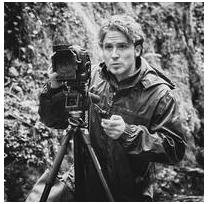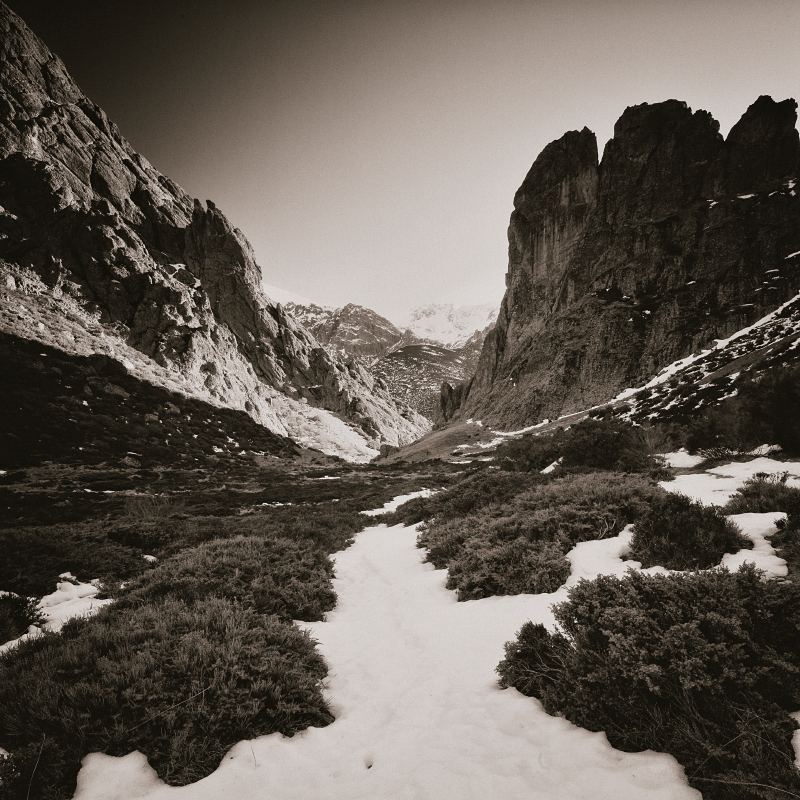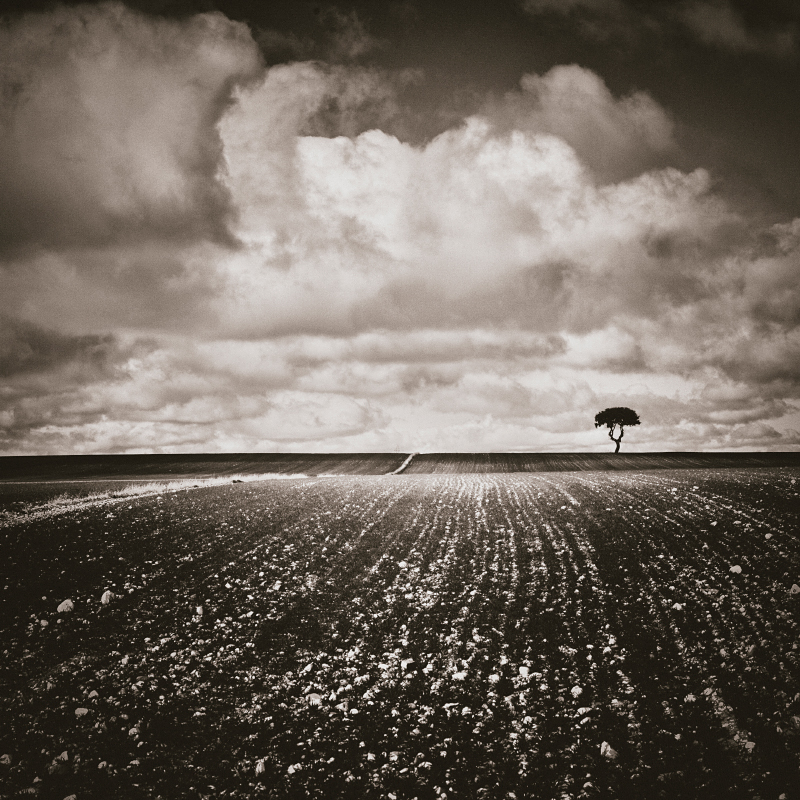After the article about his photographic work, Eduardo was so kind as to grant us an interview. You can get a glimpse of his photographic work here.

Could you please tell us something about yourself?
I’m a traveler, an explorer of the world, looking for an essence, for a meaning, for myself. I can tell you about my journey, and maybe, someday, I will be able to tell you about myself, but until then, it’s my camera which reflects that journey, that searching for the essence that binds us to the world, to nature, to air. I think that real freedom is not getting where we propose to be, but starting a journey without setting a destination.
Can you briefly tell us about your photographic background? When did you start taking photographs? How did you start?
It was not until I was nineteen that I was attracted by photography. At this time, my mother gave me my first DSLR camera, a Canon EOS 350D, so I could take pictures of our furniture showroom to make catalogs and magazines. I remember that I didn’t even know how to use the AF System when I unpacked my new camera, but I decided to learn something about its handling. Little by little, I was getting more and more interested in photography and was spending more time outside in nature with my camera.
In landscape photography I could convey many of the feelings that I experience when I indulge in nature. Maybe I began to use a camera because it was my birthday gift. Perhaps, if my mother had given to me a set of brushes and a canvas, I would have been painter today. A vocation is not always clear from the beginning. For example, Ansel Adams was studying piano before channeling his career to photography. Sometimes, a vocation crosses your life by chance. This is part of life’s mystery. You only need a deep feeling and the need to convey it, the need to share your point of view with the world, and sooner or later you will find a way to achieve it. That’s the spirit of art. By the way, I think I haven’t done much photograph of any furniture (my mother must be angry with me for this!)
What photographic style do you prefer? Would you like to specialize in a specific area, such as street photography or travel / landscape / fine art photography?
I think that landscape photography and fine art photography have always been related. Every landscape photographer must be an artist to be able to convey his feelings and his point of view to the final viewer. Achieving this is not easy, because all art work is susceptible to interpretation, and is in that interpretation process that the original essence, the original message, is missed. The photographer must be able to not only make beautiful pictures, but also to convey an idea or a feeling, something that captures the viewer’s attention, and that makes his work special and unique.

Can you tell us how your work flows from the moment you get the idea until the stage of final presentation?
Being honest, often when I arrive at a new place to photograph it, it impresses me so much that for some time I forget that I have come there to make photographs, and I just spend time walking and discovering the place. Then, when I have familiarized myself with it, I begin to see lines, compositions, lights, and shadows, and to relate to it. In black and white photography, you must be able to see that relation between the subjects, light, and shadows to make an interesting image. A black and white image is not only an image devoid of color; it is an image in which the lights and the shadows, the forms and the spaces, must be in perfect harmony. You need to learn to visualize that final image to have a clear way to facilitate your work, and largely to avoid trial-and-error results.
Once I get home, I download my CF cards in the laptop, but I never start processing on the same day! I need one or two days, at least, to start processing the captured images. Sometimes, when you return from the places where you were taking photographs, you feel like processing right away, and to view the great pictures that you’ve taken, but, in my opinion, this is an error. You are so excited from your trip to nature and with all that you could see, that you cannot realize a good processing session in a calm way. You can only start processing final images after some days, when you again experience the emotions that you felt when you took your photographs the first time. At this stage, you can start processing your images, always thinking of the final results.
Could you possibly provide a tip to the amazing photographic style, how much the pictures are processed afterwards, and what else one should take into consideration?
First, you must learn to look. Take your time to look around when you arrive at a new place and begin to feel it. Walk along the paths and don’t put your tripod on the ground until you have seen the place and have become familiar with it. You must be patient. Don’t rush a camera shot. First, look around, notice how the light falls and creates shadows.
And as I said, never process the images in the same day. Being patient is the unique way to learn and to do it the right way.

In your opinion, what constitutes the art of producing extraordinary travel / landscape / fine art photographs, and what are the characteristics of a good picture in this field?
Any image capable of making you feel. If you are able to feel what you have in front of you, and can keep that feeling, you will be able to shoot your camera and convey that feeling to your final viewers; you can probably take a great picture. I can’t understand photography or any art without feeling it. This technique is the only way to externalize and share that feeling, but it’s inert and cold without the eye of an artist. There isn’t a unique way to train this artistic eye, and only studying the photographic technique is not going to get develop it. Learn about art, painting, literature, philosophy … Feed your curiosity and open your perception of the world. Only in this way will you be able to train your vision, and maybe to create amazing photographs.
What equipment do you use and what are your favorite focal lengths?
Right now I use Canon DSLR cameras with fixed-focal-length Carl Zeiss lenses with manual focus. I love the sharpness and the perfection of the image achieved with these lenses, and I think that it is the best quality you can get in DSLR format right now. I like the depth created by the Distagon 18 mm and the natural images created by the Distagon 35 mm, but I also frequently use the Planar 50 mm and the Planar 85 mm to create some clippings in those inaccessible places.
I’m very comfortable working with DSLR cameras with full frame sensors, but I’m very attracted too to medium-format cameras, such as Hasselblad, and I know that the next step in my photographic career will be to start using medium-format cameras.
What characterizes your work in comparison with other photographers?
Each one of us has a unique vision of the world, whether you are a photographer or not. As humans, we all have different points of view, and inevitably, different ways of working. Each one learns the basic technique sooner or later, but it is the way you see everything around you that makes your photography different and unique. There isn’t a single characteristic that makes my work, or the work of any photographer, different than the work of others; there are different points of view, however, and different ways to understand what we see.
Were there interesting incidents in your photo shoots, whether funny, embarrassing or sad?
Well, every outing into nature for taking pictures is a new adventure, especially if it’s cold or raining. Usually, I go out on my excursions quite well-prepared, and I always carry some tools with me to fix any technical problem, both with my photographic equipment or my car, but sometimes you inevitably run into trouble, above all with your tripod. It’s a good idea to carry some tools to repair it.
I can remember an outing in Ézaro, in northern Spain, when I went to photograph a famous waterfall. I didn’t want to take the same pictures that everyone else, and I decided to access it from the other side of the river. At the beginning of the route there was a path, but as I progressed, the path petered out. Eventually I found a path along very steep and slippery rocks leading to the river, and made my way forward with the help of a long stick. This was complicated by the heavy equipment that I carried in my backpack, and my tripod. After several hours and some dangerous slips, I was lucky to be able to return to my car that night. I lived some really dangerous moments and I really feared for my life. That taught me that it isn’t worthwhile to risk that much for a picture.

What are the most important experiences you had during your photographic career?
Every new trip to take pictures is an important experience, not only to advance in your technique and in your photographic career, but also to finding yourself, that in my opinion is one of the most important things to achieve success in any purpose.
Some trips through northern Spain and Portugal were very important to me, and constituted the basis of my actual work. The Nature Park of Picos de Europa, Galicia, Valle del Silencio, and several places in León and Zamora awakened in me the sensitivity that I try to convey in my photographs. Do not hesitate to fulfill your vital need to leave the city and lose yourself in those wonderful places.
What advice would you give to a newbie for his/her photographic career?
Be patient: Rome was not built in one day. Any great career is the result of many years of work and constant struggle. Keep taking photographs with your DSLR or compact camera or mobile phone. Regardless of the device or the camera, any of them can serve to train your photographic eye, and you can’t always carry your heavy photographic equipment with you. Fortunately, nowadays, some mobile phones have a good quality camera, which even replaces the old compact cameras, and we are lucky that our phones are always in our pockets. If you keep that up, someday you will have enough experience to look like a photographer.
Were you inspired by other photographers, and if so, which ones?
I have always admired Ansel Adams’ career, not only his photography and his technique, but also his love for nature and his tireless struggle to protect the natural spaces. I think that he represented the real spirit of the photographer that lives in love with nature, and his work still represents this today.
I also like the work of Michael Kenna and his way to transmit the language hidden in the landscape. I think that his work about Hokkaido is a true lesson of minimalist landscape and how humans relate to it.
I’m also closely following the work of many photographers with whom I have had the pleasure of working on different projects, such as Christophe Cassegrain, Iván Noval or Chaerul Umam, and I feel very proud to say that I have worked with them.
Do you have a dream for photography that you would like to fulfill?
I always think that a great dream is built by several smaller dreams, and as you achieve that great dream, you’re fulfilling other smaller dreams. Publishing your first book, your first appearance in an important magazine, your first sales of your photographs, a great trip you were looking out to; all these are small dreams that take you to your great dream of being a photographer, and are channeling your career toward it.
Some of my small dreams to fulfill to be a photographer are the pending trips: Iceland, Indonesia, Japan, Africa … Probably my first trip will be going to Iceland shortly. I’m really excited to discover the wild and natural beauty of this land, and I have already planned a route across Iceland for more than twenty or thirty days. I don’t know if I will want to come back from there…
Would you like to tell us about something that is important to you?
The developing of a photographic eye: That’s the most important thing, in my opinion. Anyone can learn the technique to make good photographs in time, but even the most refined technique can result in an image devout of emotion. People feel and experience emotions, and photography is the most direct way to convey your message to anyone in any language, regardless of any person’s degree of understanding of photography. It’s good to have a refined technique, a personal style that defines your works and that is worthy of the admiration of critics and curators, but in my opinion, that’s useless if you are not able to convey a message, an idea, an emotion, to anyone that looks at your work. The images with the ability to generate emotions within us are the ones that really make us an artist. Otherwise, any computer, any machine, is able to create art through a pure and exact technique. We must not forget what makes us humans is that warmth that we must convey. You may enjoy a lonely place and may want to capture that solitude in your photographs, but you must bear in mind that those images shouldn’t only reflect that emotion, but also share it with your final viewer, and make him/her a partaker of that feeling. Really, people with a minimum of sensitivity are not so different each other, and if you’re at good conveying emotions in your work, you will achieve success sooner or later.
Thank you very much for this interview. We will follow your progress in photography and will continue to be inspired by it.
You’re welcome, it was my pleasure.



